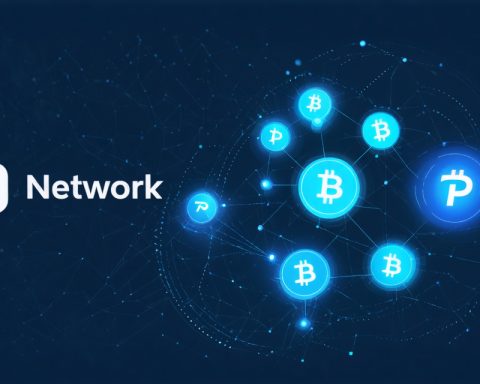- XRP, launched by Ripple Labs in 2012, is revolutionizing the financial sector beyond traditional cryptocurrency roles.
- Its primary mission is enhancing cross-border payments with fast transactions and low costs, challenging systems like SWIFT.
- XRP uses a unique consensus protocol, ensuring quick transactions with minimal energy use, aligning with sustainability goals.
- XRP democratizes financial access, benefiting emerging economies by reducing fees and inefficiencies of traditional banking.
- It sparks discussions on the future of money and the role of technology in transitioning to improved financial systems.
- For investors and observers, XRP represents a transformative force in digital currencies, promising significant changes in finance.
Beneath the surface of the vast ocean of cryptocurrencies, XRP is creating ripples that extend far beyond digital wallets and virtual exchanges. Originally launched by Ripple Labs in 2012, XRP has solidified its reputation as more than just a cryptocurrency; it’s a transformative force in the financial sector.
Imagine standing at the edge of a calm lake, where a single stone drop sends waves reaching distant shores. XRP, much like that stone, brings innovations that challenge traditional banking processes and ripple out to impact global finance.
Unlike Bitcoin or Ethereum, which often dance to the volatile tunes of speculation, XRP boasts a specific mission: revolutionizing cross-border payments. With its lightning-fast transaction speeds and minuscule costs, XRP has captured the attention of financial institutions worldwide, offering a credible alternative to the age-old SWIFT system. Transactions that once took days can now conclude in mere seconds, enabling businesses to operate efficiently on a global scale.
The technology behind XRP relies on a unique consensus protocol designed to confirm transactions quickly without the energy consumption of traditional mining processes. This environmentally conscious approach to financial operations not only aligns with global sustainability goals but also appeals to companies eager to lower their carbon footprint.
But the question remains: why should we, as general consumers, pay attention to XRP? The answer lies in its potential to democratize access to financial services. By stripping away the high costs and inefficiencies of current systems, XRP opens doors for individuals and businesses in emerging economies. Picture an entrepreneurial dreamer in a remote village who can now trade internationally without the prohibitive fees of foreign exchange and banking institutions.
As XRP continues to push the boundaries, it prompts a critical conversation about the future of money itself. Will we continue to rely on sluggish, outdated systems, or will we embrace a new era where technology ushers in enhanced financial freedom?
The takeaway is compelling: XRP isn’t merely shifting how transactions occur; it’s sparking a discussion about what is possible when finance meets innovation. With each ripple, we’re reminded that even the smallest changes can create a worldwide impact, leaving us curious and excited about the future wave of opportunities it might bring.
Whether you’re a seasoned investor or just a curious observer, keep a watchful eye on XRP. In the ebb and flow of digital currencies, it promises a profound transformation that could redefine finance as we know it.
The Future of Cross-Border Payments: Why XRP is More Than Just a Cryptocurrency
Introduction: Ripple Labs’ XRP, a frontrunner in the world of digital finance, is not just another cryptocurrency. It stands as a transformative force poised to change the landscape of cross-border payments and financial services. Let’s delve into facets of XRP that make it a game-changer in this domain.
Unique Features and Advantages of XRP:
1. Speed and Cost Efficiency: Unlike other cryptocurrencies, XRP transactions settle in seconds, not hours or days. This speed significantly reduces costs, with transaction fees being almost negligible compared to the traditional SWIFT network used by banks link name.
2. Consensus Protocol: XRP uses a consensus protocol instead of mining, which means it processes transactions quickly without the vast energy consumption associated with Bitcoin or Ethereum mining. This aligns with global sustainability goals, making it appealing to eco-conscious businesses and financial institutions.
3. Scalability: XRP can handle approximately 1,500 transactions per second, a crucial feature for scaling financial services to meet global demands.
4. Stable Market Position: While XRP might still be subject to market volatility, its specific utility in cross-border payments offers it a stable niche compared to other cryptocurrencies that rely heavily on speculation.
Real-World Use Cases:
1. Cross-Border Payment Solutions: XRP’s primary use case revolves around facilitating international transactions. Banks and payment service providers can leverage XRP to improve transaction times and reduce costs immediately.
2. Microtransactions: With minimal transaction fees, XRP is ideal for microtransactions, enabling businesses to pursue business models where tiny payments are required.
3. Emerging Markets: XRP provides financial access to underbanked regions, offering cost-effective solutions for remittance services widely used in emerging economies.
Market Forecasts and Industry Trends:
– As global trade continues to expand and the demand for faster, more efficient transaction methods grows, XRP’s integration into the financial sector is expected to increase.
– Analysts predict that more financial institutions will adopt XRP as regulatory clarity around cryptocurrencies improves, potentially increasing its adoption rate and value.
Security and Sustainability:
– Security: XRP’s consensus protocol stands strong against potential breaches. However, as with any financial instrument, users should maintain robust security practices like using hardware wallets to store their assets securely.
– Environmental Concerns: XRP’s low-energy protocol represents a sustainable approach to modern finance, offering a competitive edge over high-energy proof-of-work cryptocurrencies like Bitcoin.
Pros and Cons Overview:
– Pros: Speed, low cost, eco-friendly, scalable, established partnerships in the finance industry.
– Cons: Subject to regulatory challenges, centralized perception due to Ripple Labs’ control, limited scope compared to some multifunctional blockchain platforms.
Controversies and Limitations:
– One controversy surrounding XRP is its legal status in the ongoing SEC lawsuit, which could impact its regulation and adoption across U.S. markets.
Conclusion and Actionable Recommendations:
– Stay Informed: Whether you are an investor, a business owner, or an observer, keeping updated with regulatory news and market trends surrounding XRP is vital.
– Consider Adoption: Businesses can explore XRP as a cost-reduction tool in international payments, potentially broadening their market reach.
– Evaluate Risks: Understand the risks and legal implications of investing in or using XRP due to existing regulatory environments.
XRP is not merely reshaping cross-border payments; it is spurring conversations on the future of financial services. As we navigate this new era of technology-enhanced finance, XRP stands promisingly at the forefront, challenging conventional systems and redefining what’s possible.





















